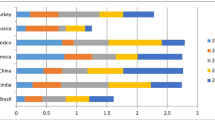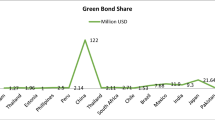Abstract
One of the main barriers to the development of energy efficiency (EE) projects in Brazil is the decision-makers’ lack of knowledge about the risks of the projects. The Brazilian Government’s Procedures of Energy Efficiency Program (PROPEE) is currently one of the main sources of funding for energy efficiency (EE) projects. The method for evaluating the technical and economic feasibility of projects presented in PROPEE applies the traditional discounted cash flow (DCF) methodology to calculate the net present value (NPV). The energy price used in this model is a fixed value calculated through the postponement of investments (cost of avoided demand) and/or reduction of operating expenses (avoided energy cost). The avoided costs for a given voltage level are incurred throughout the power system, upstream of the consumption unit (view of the electrical system’s operator). The PROPEE’s methodology, applied on a large scale in Brazil, does not consider some technical uncertainties present in EE projects, nor the market uncertainty regarding the fluctuation of the energy price paid by the consumer units. This paper evaluates the investment risk of EE projects (consumer’s perspective) adopted by the Brazilian market, taking as example a large electricity consumer. A methodology is proposed, which, considering the technical and economic uncertainties, performs a more comprehensive and realistic analysis of the complex business scenario involving the EE projects. This case study considered the data collected by a team of independent engineers, for the first time in January 2009 and updated in January 2015, to assess the energy efficiency potential of a commercial consumer unit installed in the city of Rio de Janeiro and connected to the grid of local distribution level voltage 13.8 kV. This study demonstrates a model that made the risk management projects viable in energy efficiency demand-side management (DSM). However, it could also be applied in other markets as well. Understanding how the uncertainties affect decision-making in EE projects is essential for developing a more comprehensive outlook on constructive and regulatory perspective, contributing to the promotion of energy efficiency projects.



Similar content being viewed by others
Notes
Independent operator responsible for the transmission of electric energy and for the dispatch of the generation of the National Interconnected System (SIN), guaranteeing the energy optimization.
The marginal cost of operation is the addition to the minimum cost of operation of the system to meet a unit increase in consumption, with the marginal cost of operation measured in monetary units per MWh.
ANEEL, Agência Nacional de Energia Elétrica—Brazilian regulatory agency for electricity.
BRL, Brazilian Real
Risk adjusted rate is the total rate of return of a risk asset μ = α + δ (capital gain plus dividends).
References
Abadie, L. M., Ortiz, R. A., & Galarraga, I. (2012). Determinants of energy efficiency investments in the US,. pp. vol. 45, no. 0, pp. 551-566.
Abadie, L. M., Chamorro, J. M., & González-Egui, M. (2013). Valuing uncertain cash flows from investments that enhance energy efficiency. Journal of Environmental Management, 116(0), 113–124.
Agência Nacional de Energia Elétrica - ANEEL. (2013). Procediembtos do Programa de Eficiência Energética - PROPEE. Resolução Normativa n° 556. Brasil.
Aguiar, A. S. (2008). Equivalente Certo e Medidas de Risco em Decisões de Comercialização de Energia Elétrica. Rio de Janeiro: Departamento de Engenharia Elétrica, PUC-Rio.
Albuquerque, J. P., Fortes, J. M., & Finamore, W. A. (2008). Probabilidade, variáveis aleatórias e processos estocásticos. Rio de Janeiro: Interciência.
Alcorta, L., Brazilian, M., & De Simone, G. (2014). Return on investment from industrial energy efficiency: evidence from developing countries. 7(1), 43-53. Fonte: https://doi.org/10.1007/s12053-013-9198-6
Allcott, H., & Greenstone, M. (2012). Is there an energy efficiency gap?. National Bureau of Economic Research Working Paper Series.
Alves, M. J. (2011). Determinação do Preço no Mercado de Energia Brasileiro e Valoração de um Derivativo de Energia por Simulação de Monte Carlo com Aproximação por Algoritmos Genéticos. Dissertação de Mestrado - Departamento de Energia Elétrica - DEE, Pontifícia Universidade Católica do Rio de Janeiro - PUC-Rio. Rio de Janeiro, Rio de Janeiro, Brasil.
Anderson, S. T., & Newell, R. G. (2004). Information programs for technology adoption: the case of energy-efficiency audits. Resource and Energy Economics, 26(1), 27–50.
Aragón, C. S., Pamplona, E., & Medina, J. R. (2013). Identification of energy efficiency investments and their risk assessment. Gestão & Produção, 20(3), 525–536.
Artzner, P. (1999). Coherent measures of risk. Mathematical Finance, pp. vol. 9, no. 3.
Assis, J. P. (2006). Simulação estocástica de atributos do climae da produtividade potencial de milho utilizando-se distribuição triangular. Revista Pesquisa Agropecuária Brasileira, 41(3), 539–543.
Associação Brasileira de Normas Técnicas - ABNT. (2008). NBR 16401-2. Instalações de Ar Condicionado - Sistemas Centrais e Unitários - Parte 2: Parâmetros de Conforto Térmico.
Bertoldi, P., & Huld, T. (2006). Tradable certificates for renewable electricity and energy savings. Energy Policy, 34(2), 212222.
Boyle, P. (1997). Options - Monte-Carlo Approach. Journal of Financial Economics, pp., 4(3), 323–338.
Boyle, P., Broadie, M., & Glasserman, P. (1997). Monte Carlo methods for security pricing. Journal of Economic Dynamics & Control, 21(8-9), 1267–1321.
Brealey, R. A., & Myers, S. C. (1998). Princípios de Finanças Empresariais. Portuga: McGraw-Hill.
Brown, M., Baer, P., & Cox, M. (2014). Evaluating the risks of alternative energy policies: a case study of industrial energy efficiency. Energy Efficiency. Fonte, 7, 1–22. https://doi.org/10.1007/s12053-013-9196-8.
Carmona, R., & Coulon, M. (2013). A survey of commodity markets and structural models for electricity prices. Quantitative Energy Finance, pp. 41-83.
Carvallo, J., Larsen, P., & Goldman, C. (2015). Estimating customer electricity and fuel savings from projects installed by the US ESCO industry. Energy Efficiency, pp. 8,125. Fonte: https://doi.org/10.1007/s12053-015-9405-8
Chamorro, J. M., & Abadie, L. M. (2009). Investments in energy efficiency under climate policy uncertainty,. Joint Seminar Programme EHU-BC3: 5th Seminar. Sarriko: Spain.
Dias, M. A. (2001). Investment in information for oil field development using evolutionary approach with Monte Carlo simulation. The Annual International Conference on Real Options – Theory Meets Practice. UCLA, Los Angeles, USA.
Dias, M. G. (2009). Lecture notes IND2272 - Analysis of investments with real options. Pontifical Catholic University of Rio de Janeiro (PUC-Rio).
Dixit, A. K., & Pindyck, R. S. (1994). Investment under uncertainty. Princeton: Princeton University Press.
Duffie, D. (1992). Dynamic asset pricing theory. Princeton University Press.
Efficiency Evaluation Organization - EVO. (2007). International performance measurement and verification protocol - IPMVP. Concepts and Options for Determining Energy and Water Savings.
Empresa de Pesquisa Energética - EPE. (2007). PNE 2030. Plano Nacional de Energia 2030, 408p. Rio de Janeiro, RJ, Brasil.
Garcia, A. G. (2009). Leilão de Eficiência Energética no Brasil. Rio de Janeiro: Synergia.
Goldman, C. A., Hopper, N. C., & Osborn, J. G. (2005). Review of US ESCO industry market trends: an empirical analysis of project data. Energy Policy, 33(3), 387–405.
Grubb, M. J. (1990). Communication energy efficiency and economic fallacies. Energy Policy, 18(8), 783–785.
Jaffe, A. B., & Stavins, R. N. (1994). The energy-efficiency gap What does it mean? Journal of Markets for energy efficiency, 22(10), 804–810.
Jorion, P. (2001). Value at risk: the new benchmark for managing financial risk. New York: McGraw-Hill.
Justel, A., Pefia, D., & Zamar, R. (1997). A multivariate Kolmogorov-Smirnov test of goodness of fit. Journal of Statistics & Probability Letters, 35(3), 251–259.
Kihm, S., & Cowan, C. (2009). Uncertainty, real options, and industrial energy efficiency decisions. Summer Study on Energy Efficiency in Industry. New York: Niagara Falls.
Krokhmal, P., Palmquist, J., & Uryasev, S. (2002). Portfolio optimization with conditional value-at-risk objective and constraints. Journal of Risk, 4(2), 43–68.
Lazo, J. G. (2004). Determinação do Valor de Opções Reais por Simulação de Monte Carlo com Aproximação por Números Fuzzy e Algoritmos Genéticos. Tese de Doutorado - Departamento de Engenharia Elétrica, Pontifícia Universidade Católica do Rio de Janeiro - PUC-Rio. Rio de Janeiro, Rio de Janeiro, Brasil.
Lecuyer, P. (Oct, 1990). Random numbers for simulation. Journal of Communications of the Acm, 33(10), 85–97.
Mayo, R. (2009). Derivativos de Eletricidade & Gerenciameto de Riscos. Rio de Janeiro: Synergia.
Metropolis N, Ulam S, (1949) The Monte Carlo Method. Journal of the American Statistical Association 44 (247):335–341
Mills, E. e. (2006). From volatility to value: analysing and managing financial and performance risk in energy savings projects. Journal of Reshaping Markets for the Benefit of Energy Saving, 34(2), 188–199.
Ministério de Minas e Energia - MME. (2011). Plano Nacional de Eficiência Energética - Premissas e Diretrizes Básicas, p. 13, pp. 13-15. Brasília: Departamento de Desenvolvimento Energético.
Mun, J. (2006). Modeling risk: applying Monte Carlo simulation, real options analysis, forecasting, and optimization techniques. New Jersey: John Wiley & Sons Inc.
Rockafellar, R. T., & Uryasev, S. (2002). Conditional value-at-risk for general loss distributions, Journal of Banking & Finance vol. 26, no. 7.
Schwartz, E. S. (1997). The stochastic behavior of commodity prices: implications for valuation and hedging. Journal of Finance, 52(3), 923–973.
Uryasev, S., & Rockafellar, T. (2001). Conditional value-at-risk: optimization approach. Stochastic Optimization: Algorithms and Applications, p. vol. 54.
Zbigniew, M. (1996). Genetic algorithms + data structures = evolution programs. USA: Springe-Verlag.
Author information
Authors and Affiliations
Corresponding author
Ethics declarations
Conflict of interest
The authors declare that they have no conflict of interest.
Additional information
Publisher’s note
Springer Nature remains neutral with regard to jurisdictional claims in published maps and institutional affiliations.
Rights and permissions
About this article
Cite this article
da Rocha, J.E.N., Pacheco, M.A.C. Energy efficiency risk analysis and policy in Brazil. Energy Efficiency 12, 2227–2239 (2019). https://doi.org/10.1007/s12053-019-09815-w
Received:
Accepted:
Published:
Issue Date:
DOI: https://doi.org/10.1007/s12053-019-09815-w




